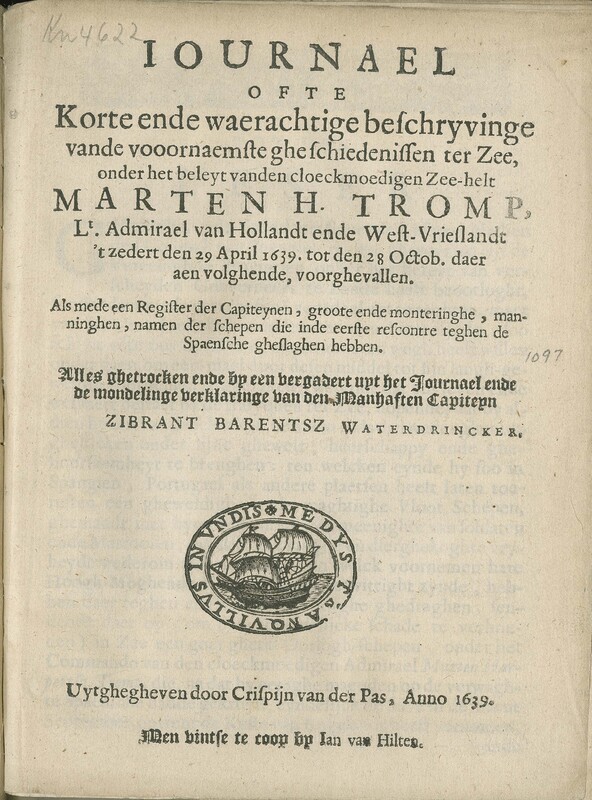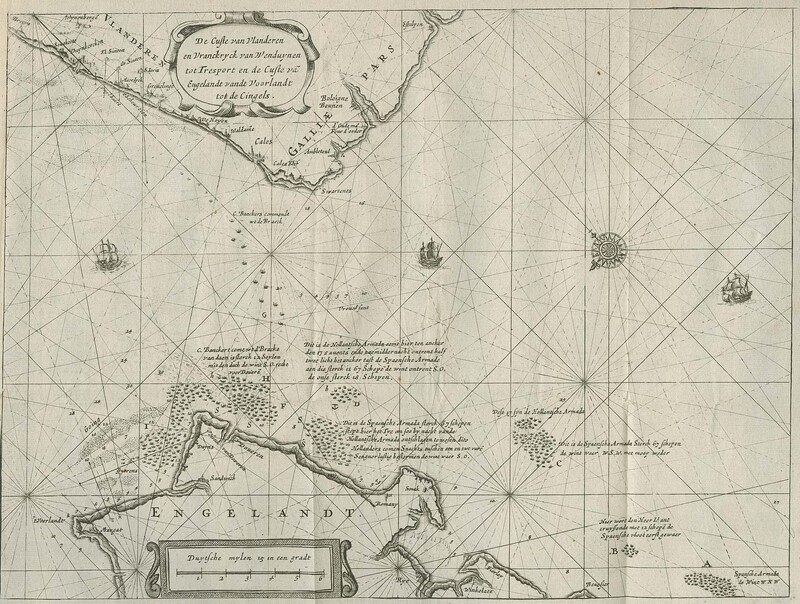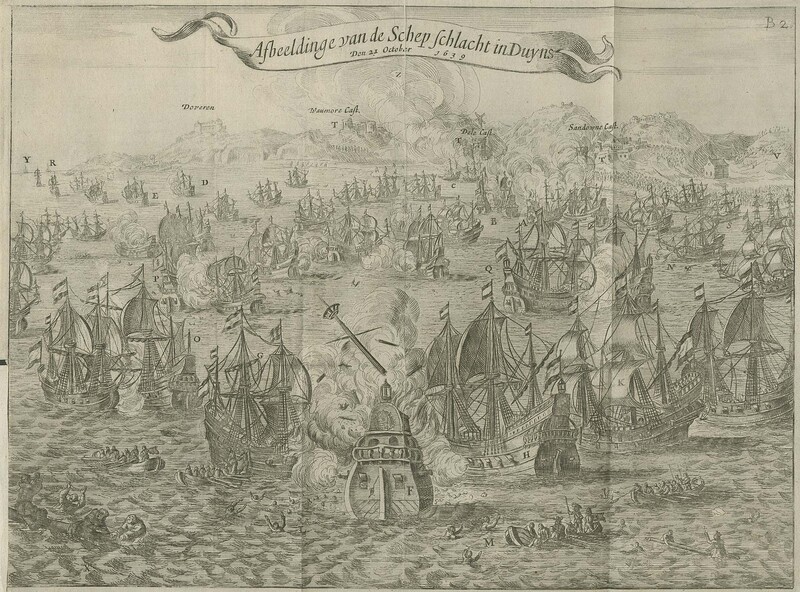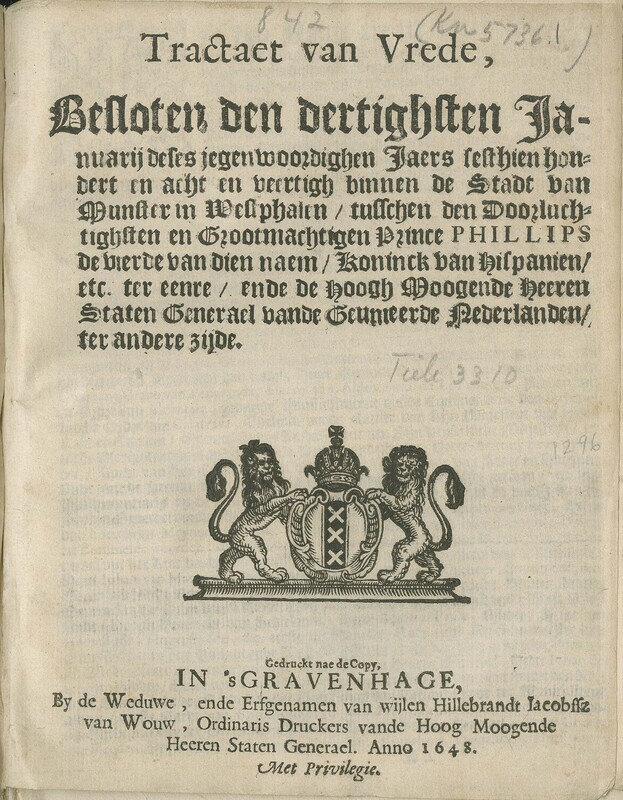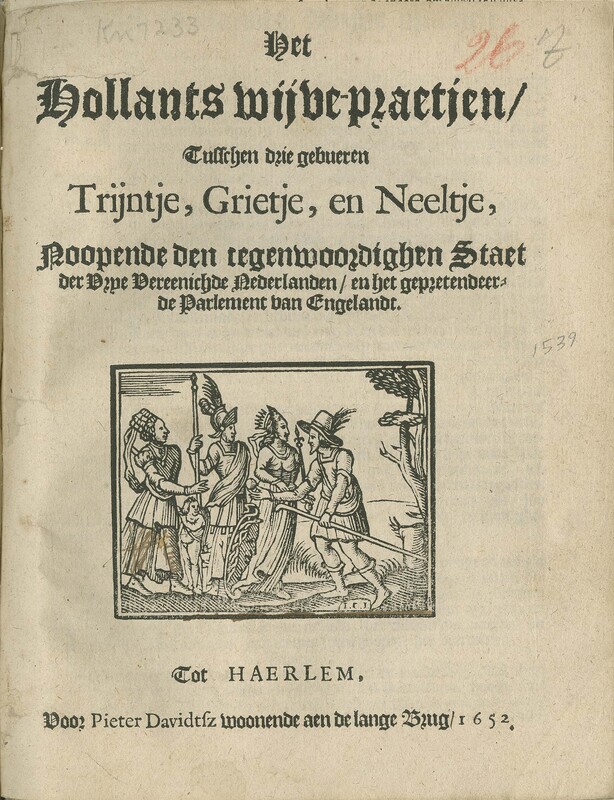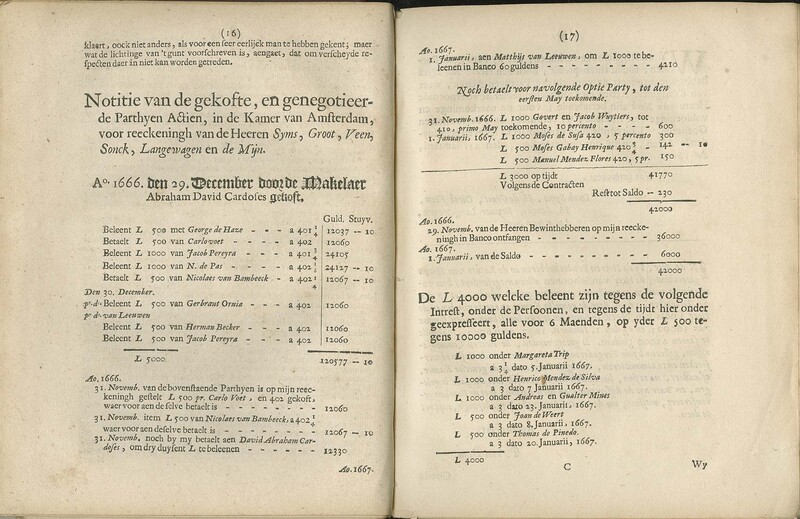The Road to Sovereignty and Commercial Expansion
The pamphlets included in this section serve as eloquent witnesses of the rapid progression of the General States towards military and commercial expansion, and, most significantly, towards sovereignty. The Peace of Westphalia, signed in 1648, marked the end of the Eighty Years' War between the United Provinces of the Netherlands and Spain, as well as the conclusion of the Thirty Years' War in the Holy Roman Empire.
Printed in The Hague in 1629, this pamphlet celebrates Admiral Piet Hein's capture of the Spanish silver fleet in Matanzas Bay, Cuba, in 1628. At the time of the Spanish defeat, Admiral Piet was employed by The Chartered West India Company (Geoctroyeerde Westindische Compagnie), which had been chartered in 1621 with a trade monopoly for the Caribbean, West Africa, Brazil, and North America. As a consequence of the Matanzas Bay battle, Piet captured part of the Spanish fleet loaded with treasure from their American colonies and the Philippines: 11,509,524 guilders of booty. This exploit earned him fame as a folk hero.
The title page of this pamphlet perfectly summarizes its content: "Journal or the short and true description of the most important naval stories, under the guidance of the courageous seaman Marten H. Tromp ... since April 29, 1639, until October 28. including also a register of the captains ... names of the ships that fought against the Spanish in the first retaliation. / Everything ... at a meeting ... of captain Zibrant Barentsz Waterdrincker." Below this long title is a woodcut depicting a ship that is surrounded by a Latin motto encouraging a stoic attitude that had been used by William I of Orange: In undis mediis tranquilus ("calm amid the waves").
Enclosed within this pamphlet lies an unfolded engraved map depicting Admiral Maarten Harpertzoon Tromp's decisive victory over the Spanish fleet in the Downs of the English Channel on October 21, 1639. The upper portion of the map illustrates the northern tip of France, while the lower section delineates the strategic positions of the Spanish and Dutch fleets preceding the pivotal battle. Beneath, also included in this pamphlet, is a captivating engraving that captures a close-up depiction of the two opposing fleets locked in combat. The defeat of the Spanish Armada proved instrumental in hastening the decline of Spanish naval dominance.
Above, also included in this pamphlet, is a captivating engraving that captures a close-up depiction of the two opposing fleets locked in combat. The defeat of the Spanish Armada proved instrumental in hastening the decline of Spanish naval dominance.
The title page of this pamphlet is adorned with a woodcut representing the coats of arms of the city of Amsterdam: a shield with a black pale filled with three Saint Andrew's crosses; above the shield is the Imperial Crown of Austria; both the shield and the crown are flanked by two lions. It contains the terms of the Peace of Westphalia (Germany), which marked the end of the Eighty-Years War between the United Provinces and Spain, and the end of the Thirty Years' War in the Holy Roman Empire. Hence, the United Provinces of the Netherlands were finally acknowledged as a free and sovereign state.
This printing of this treaty, in Dutch and Spanish, includes the documents granting proxy privileges to the Spanish and Dutch envoys, the ratifications of Philip IV and the States General, and the proclamation of peace, dated 30 January 1648.
The woodcut vignette on the title page depicts a well-known mythological tale: The Judgement of Paris. On the right, the male figure represents Paris, identifiable by his shepherd's hook/staff and the apple, known as the Apple of Discord. Moving from left to right, the three women depicted are Aphrodite, the goddess of love, along with Cupid, offering Paris the most beautiful woman in the world, Helen of Sparta; Athena, the goddess of war and wisdom, accompanied by Cupid, offering him wisdom in war; and Hera, queen of the gods and the goddess of marriage, women, marital harmony, and childbirth, offering to make Paris King of Europe and Asia.
Presented in the form of a conversation among three women (Neeltje, Grietje, and Trijntje), whose different opinions resonate with the tale of the Judgment of Paris, this pamphlet critically examines various political issues of the time. Primarily, it scrutinizes Admiral Maarten Harpertszoon Tromp's role in the Battle of Dover, the decline of the West Indian Company, and the imminent loss of Brazil. Published in 1652, coinciding with the outbreak of the first Anglo-Dutch War following the Battle of Dover on 29 May 1652, this pamphlet adopts a simple language and incorporates the voices of common people, ensuring engagement and a wide reception.
This pamphlet contains extraordinary evidence of the working of the United East India Company (Vereenigde Oost-Indische Compagnie). On the two pages shown above are lists of the accounts of various stockholders of the Company from 1663 to 1671, including amounts and prices of goods purchased. This publication also gives an account of matters considered in the meetings of the directors of the Company. Established in 1602 with a monopoly on trade to Asia, the VOC the United East India Company remained an important trading company for almost 200 years, being formally dissolved in 1800.
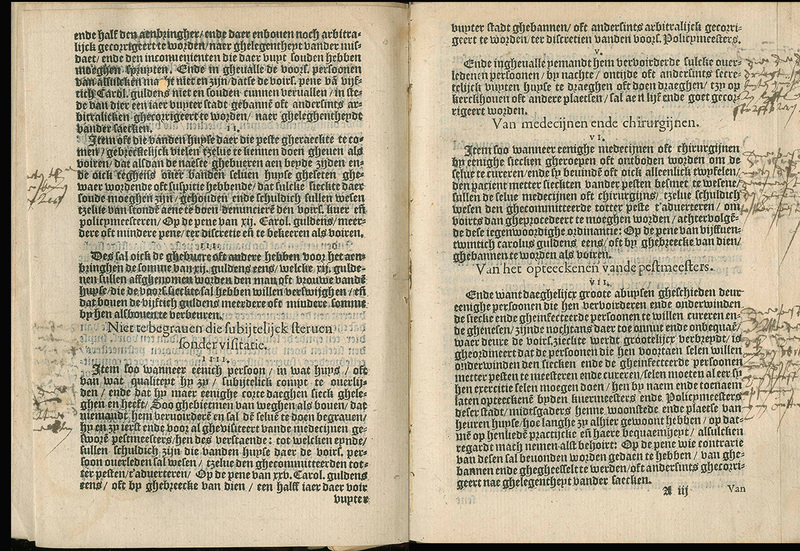
Internal Affairs

Annus Horribilis (1672) & The Glorious Revolution (1688)


